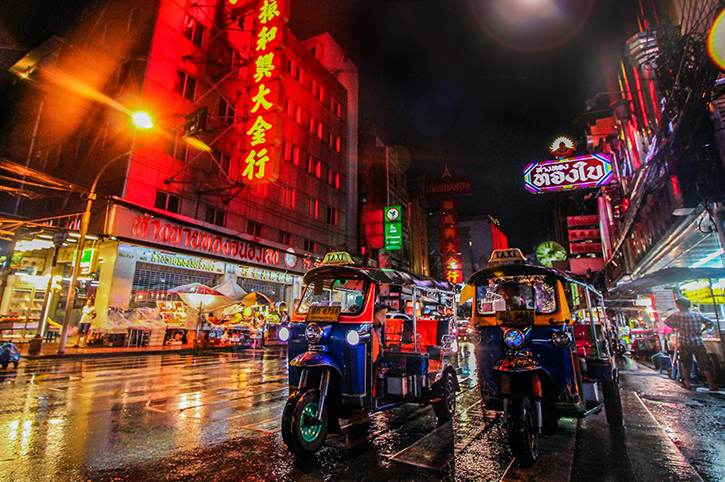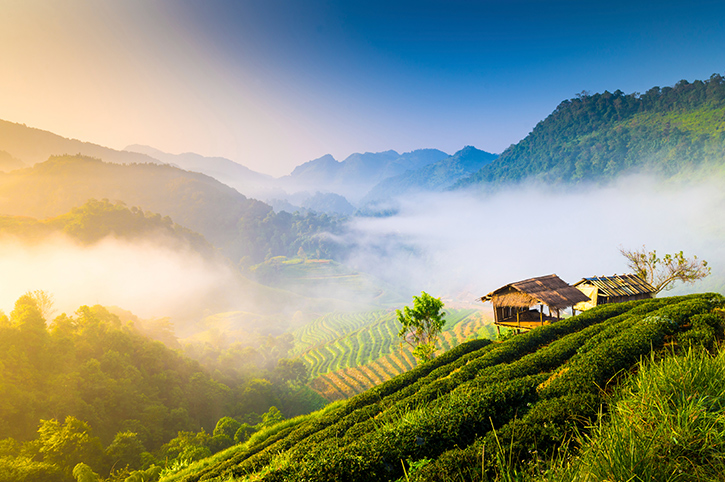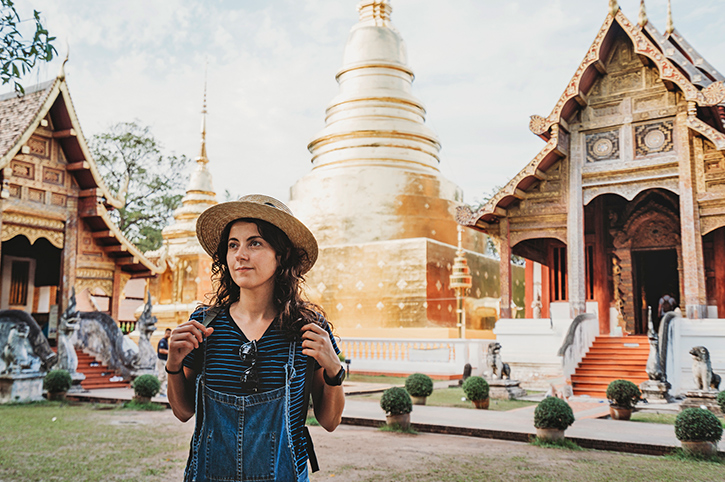
Understanding Thailand’s wet seasons can make the difference between a good holiday and a great holiday. Being caught in Thailand’s tropical monsoon without an umbrella may be memorable, but for the wrong reasons!
An exotic but affordable destination, offering a mix of ancient culture and tropical beaches, nearly one million British tourists visit Thailand each year. But whether you are planning a beach break in Phuket, a wildlife adventure in Khao Sok National Park, or a guided tour of Chiang Rai and Northern Thailand, you will want to know; when is the best time to visit Thailand? What is the weather like in Thailand? And most importantly, when is the wet season in Thailand?
We can answer all those questions…
Thailand enjoys a tropical climate; warm and humid with temperatures generally a pleasant 22⁰C to 32⁰C. However, the country’s distinct geography influences the weather in different regions. The elevated northern towns of Chiang Mai and Chiang Rai are a little cooler for example; you’ll probably want a jumper in the evenings.
Essentially there are two rainy seasons in Thailand:
Rainfall within Thailand’s wet seasons is often called the monsoon. Typical monsoon rainfall is torrential downpours for intense periods. In Thailand the tropical monsoon rainfall is usually for short periods. The rain will usually occur in the afternoons as the heat and humidity build throughout the day. It’s a misconception that the rainy season in Thailand means that there will be rain all day or indeed every day.
The rainy season in Bangkok usually starts around late June and continues to early October. During its peak in July and August, there are often intense afternoon and evening downpours, with flash flooding not uncommon as the rainwater channels through the streets looking for a place to escape.
You’ll find locals will carry on their daily lives however, driving or wading through the water. For tourists, less familiar with monsoon rains, getting around the city becomes a little more of an adventure, though the drop in humidity is usually welcome.

With a little planning, you can still have a great time visiting Bangkok during rainy season. If you head to the temples and outdoor attractions in the morning, when there is less chance of rain, you can stay dry in the afternoon exploring the National Museum or Jim Thompson House Museum, by heading to the cinema (where Western releases are often in English with Thai subtitles) or just relaxing in one of the city’s hundreds of bars or restaurants.
The wettest months in the beach resorts of Phuket and Krabi are September and October, although the rainy season runs anytime between June and November. Kao Lak, Phi Phi and the rest of the Andaman Coast follow a similar patten.

Having said that it is wet in these months, the weather doesn’t particularly stop tourists from visiting Phuket, Krabi and the other islands and resorts in south west Thailand, as the beaches remain open and there is plenty to see and do away from the beach on a rainy day.
On days where strong winds from the south west create waves on the sea, snorkelling and diving may not be possible, but the rainforests come to life and waterfalls will be at their peak.
The rainy season reaches the Gulf islands of Koh Samui, Koh Phangan (Ko Pha-ngan) and Koh Tao later then the other popular islands on the west coast. These idyllic islands attract tourists all year round for their golden sandy beaches, clear blue waters and exclusive resort hotels. The weather remains hot and humid throughout the year and even in the monsoon it is possible to miss the heavy downpours.

The wet season arrives in Koh Samui and the other Gulf Islands in October, usually reaches its peak in November, and then gradually decreases into January. As the monsoon approaches Thailand from the south west, it is the Andaman Coast that it reaches first, before heading across the land. Therefore, the wet season in Koh Samui arrives later than its western Thai neighbours in Phuket and Krabi.
The northern regions of Thailand have a distinctly different climate to the rest of the country, particularly in the highlands where temperatures can feel a lot cooler. Around January and February in higher areas temperatures can drop into single figures and it is not unknown to see a morning frost.
The wet season in Chiang Mai and Chiang Rai can last from May until October, with the rainfall likely to peak between July and August. This also applies to the areas around Lampang, Mae Hong Son and Pai.

Despite the prolonged wet season, the cities of Chiang Mai and the surrounding area continues to attract tourists all year round. The history and the culture provided by the ancient temples and the untouched countryside are a major attraction, as well as for those wishing to escape the heat and humidity of Thailand’s more southern regions.
Multi centre and island hopping holidays by Freedom Destinations.
The north-eastern borders of Thailand are home to the Mekong River, which is powered by rainfall in the highlands. However, the wet season in north east Thailand, is really restricted to the months of August and September. This is because the strength of the monsoon rains dissipates on its journey across Thailand from the south west coast, so the moisture in the clouds and the power of the rain is much reduced.

The lack of consistent rainfall in the north east of Thailand has contributed to lower water levels in the Mekong River, causing issues for those reliant on the river downstream. How much this is due to global climate change and the recent large scale dam projects in China and Laos, remains to be seen.
The rainy season in the eastern regions of Thailand arrives in May and can continue until October, with most rainfall in June, July and August.
Whilst this area is a long way from the south west where the monsoon rains first make landfall, the incoming weather systems recharge as they cross the warm waters in the Gulf of Thailand, meaning that when it reaches Koh Chang and the islands off the eastern coast, the monsoon is powerful once again.

Whilst the monsoon may also bring stronger winds and bigger waves, which can interrupt snorkelling and diving in the area, it also brings low season to these less frequented resorts, useful if you are on a tight budget.
“Thailand can be an year-round holiday destination” says Emily, one of Freedom Destinations’ Asia Experts. “Yes, we generally think the best time to visit Thailand is between November and April as this is the cooler and drier season for most of the country. However, it is also the busiest time to visit Thailand.”

“Although most travellers prefer not to visit Thailand during the wet season, it is still possible to have incredible experiences and visit superb places, by choosing the right holiday itinerary. And whilst monsoon rains will be heavy, they usually last for a couple of hours at most, so you can plan around the downpours. Not only that, but we can find you some great value hotel prices too.”
“If you don’t want to brave the rain in the wet season, then there is still great value to be found throughout Thailand.” concludes Emily, “Consider travelling in the shoulder season, between high and low season, when you enjoy good weather, places are not quite so busy, and there are still good offers to be had.”
To begin planning your next holiday to Thailand, contact the Freedom Destinations Asia Team today.
Richard has more than 25 years of experience working within the travel industry. He has travelled widely in Europe, the USA & Canada, Australia & New Zealand, South East Asia, as well as Southern Africa. He enjoys exploring National Parks and other wilderness areas.